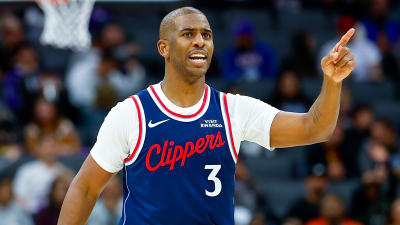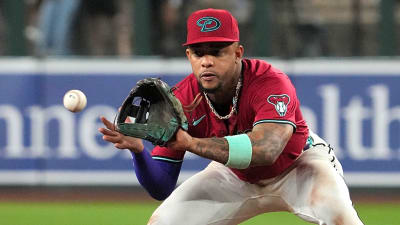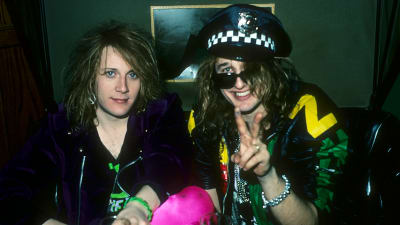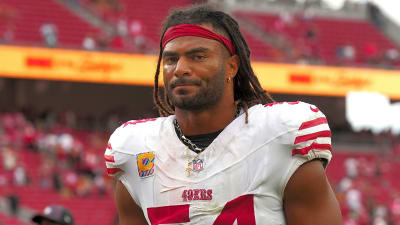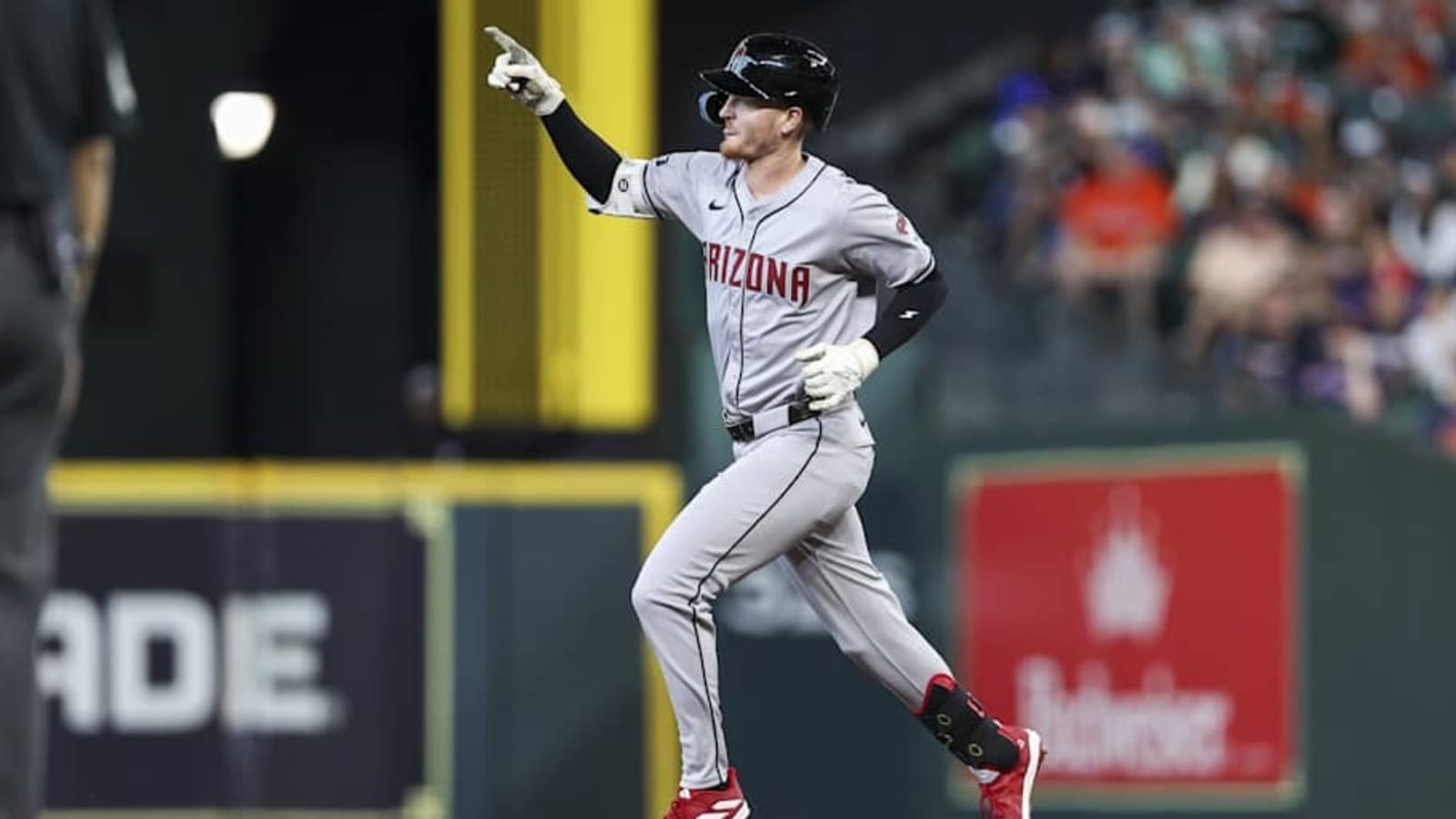
Although we've concluded our series breaking down the individual player projections of the 2025 Arizona Diamondbacks, some appear to have more expectations set on them than others.
The projections are a composite average of ZiPS and Steamer, prorated to our own playing time estimate. Often, these types of projections expect a heavy regression to the mean, and weight recent seasons more heavily than others.
For that reason, projections can tend to get a bit skewed. While it's reasonable to expect regression to some degree, these three hitters seem to be the most likely to outperform their expecations.
OF/1B Pavin Smith
The projection: .248/.334/.409, .743 OPS, 14 HR, 0.9 aWAR in 431 PA
Pavin Smith is one of the bigger question marks in the lineup, but he certainly showed that he can hit at a major league level in 2024.
He did only get 158 plate appearances, and the vast majority were against right-handed pitchers, so it's easy to look at his excellent .270/.348/.547 slash last season and get the wrong idea.
But the truth is that his projections are low for a player who just put forward a season like that, all other factors notwithstanding.
The Diamondbacks are likely looking for a right-handed bat to platoon at the DH role. If they do so, Smith will still see an increased opportunity, but will be mostly protected from southpaws.
Similarly to Joc Pederson's excellent 2024, if Smith is afforded the situation that Pederson was, there's no doubt he can surpass the modest projections set out for him.
Obviously, Smith's numbers could see a sharp decrease in 2025, especially if he is asked to face left-handed pitching more frequently. But even seeing some regression from the lefty could still allow him to beat his projections.
A .248 average isn't much to overcome, and considering how he managed a .547 slug last season, dropping nearly 150 points in that category seems unlikely - unless, of course, he's expected to be the full-time DH. But if he's protected even slightly, Smith could have another big year.
INF Blaze Alexander
The projection: .229/.299/.344, .643 OPS, 3 HR, 0.2 aWAR in 182 PA
When dealing with a young hitter - one who is likely to see a smaller sample size - it's easy to assume severe regression or general underperformance.
But with Blaze Alexander, the issue was never truly his bat. Yes, it did start to cool off at the major and minor league levels in 2024, but he came in quite hot, slashing .313/.405/.531 after his first full month.
That fell off quickly, but even a very poor end to Alexander's season still saw him sitting at .247/.321/.343. That slash isn't anything to write home about, but it's still notably higher than what he's projected for in 2025 in a similar number of plate appearances.
Alexander's bat can play at the major league level, especially against left-hand pitching. Against southpaws, he slashed .297/.373/.446, good for an .819 OPS.
Obviously it's impossible to fully protect him from righties, but considering the somewhat limited playing opportunity in the infield, he could conceivably get some platoon-specific looks in 2025 if the D-backs don't add another bat.
At any rate, Alexander's defense will be the key to watch. His poor defense earned him a -4 Fielding Run Value due to his four errors, which was the key factor in his being sent down.
If the young infielder can steady his defense to even an average level, that will provide a boost to his aWAR, while also likely earning him more playing time and opportunities at the plate.
If Alexander can focus somewhat more on left-hand pitching, while playing improved defense, he could easily overcome an extremely low projection.
OF Corbin Carroll
The projection: .259/.347/.462, .809 OPS, 26 HR, 4.6 aWAR in 685 PA
It's been written about in great lengths. 2023 NL Rookie of the Year Corbin Carroll's 2024 season was one to forget, until it wasn't.
Somehow, the speedy outfielder turned a .186/.269/.273 slash on May 25 into a .231/.322/.428 season, with 22 homers to go with it.
His projection actually doesn't seem to think he'll struggle nearly as much. While not necessarily superstar-level, his projected slash is actually quite reasonable, perhaps even generous considering how much Carroll struggled in 2024.
But the truth is, Carroll's 2024 results were a bit of an anomaly. His BABIP was a dismal .256, as plenty of well-struck balls went for outs.
But from July on to the end of the season, he slashed an immense .250/.339/.549, good for a .889 OPS, while his BABIP remained unbelievably low, at .252.
It's easy to look at a projected .809 OPS and wonder if it's greedy to expect much more out of Carroll in 2025. But truly, outside of an extended slump, with poor luck sprinkled in, those projected numbers are nothing compared to what Carroll has shown he's capable of.
Even as a young rookie in 2022, with a sky-high 27.0% strikeout rate in a smaller sample size, Carroll managed to generally outperform the same numbers that are projected for 2025.
While these projections will heavily weight 2024's down year, it's absolutely not out of the question to see a slug north of .500 and an OPS above the projected .809.
With any amount of increased batted ball luck, paired with his incredible speed, a .259 average could be easily smashed, so long as he doesn't enter 2025 in a similar slump.
The projection isn't unreasonable, but Carroll has defied reason many times before.
Related Content
Arizona Diamondbacks 2025 Player Projections Links Hub
More must-reads:
- Diamondbacks make early move at Winter Meetings, agree to deal with RHP Michael Soroka
- Barry Bonds, Roger Clemens learn fate as new Hall Fame member announced
- The 'Receiving leaders by NFL team' quiz
Breaking News
Trending News
Customize Your Newsletter
 +
+
Get the latest news and rumors, customized to your favorite sports and teams. Emailed daily. Always free!
